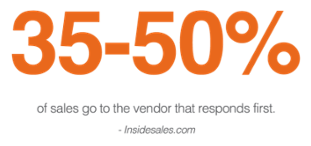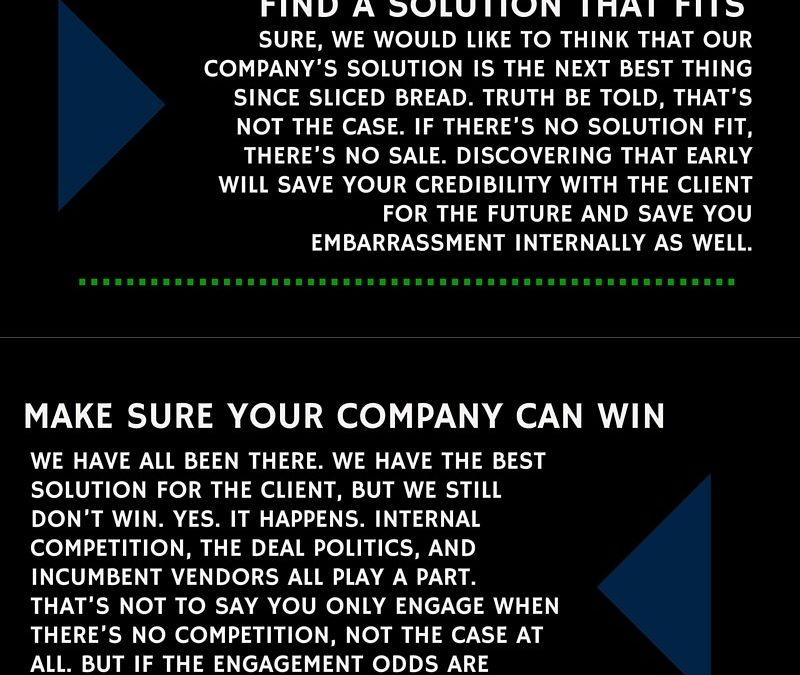
by Fronetics | Oct 15, 2015 | Blog, Consumer Electronics, Logistics, Marketing, Social Media, Strategy, Supply Chain

Consumers are using social media to help them make purchase decisions. An infographic by Invesp provides key details including that:
- 4 in 10 social media users have purchased an item online or in-store after sharing it or marking it as a favorite on Twitter, Facebook or Pinterest.
- 50% of those purchases take place within a week; 80% take place within 3 weeks.
- 71% of consumers are more likely to make a purchase based on social media referrals.
- Twitter is the most influential for tech purchases, and the least influential for gardening and decor.
- The top 2 ways Twitter helps solidify purchase decisions are: purchase location identification and product discovery.
A Consumer Electronics Association (CEA) study found similar results. CEA found that 24 percent of consumers who use social media say that they always or almost always refer to social media websites before they make a consumer electronics purchase. For high engagement users (13.5 or more hours per week) this increases to 65 percent.
Here’s how companies can use this information to reduce returns.
Inform
Use social media to give consumers the basic facts about your company and your product.
Educate
Use social media to educate consumers about your product. Specifically, social media can be used to educate the consumer about how the product can be used, the benefits that can be realized by the use of the product, and the ROI of the product.
Engage
Use social media to engage with consumers.
If a consumer is considering the product, use social media to answer questions the consumer has, or to address concerns. Similarly, if the customer has already purchased your product, you can use social media to answer questions the consumer has, or to address concerns.
Through the use of social media you can enable consumers to make more informed purchase decisions. Additionally, you can use social media to answer questions and better educate consumers on how to use your product thereby reduce no fault found returns.
This was originally published on Electronics Purchasing Strategies.

by Fronetics | Oct 14, 2015 | Blog, Marketing, Social Media, Strategy, Supply Chain

A study conducted by Accenture found that supply chain risk management is seen by companies as a priority. Seventy-six percent of companies who participated in the survey described supply chain risk management as important or very important, and 25 percent of respondents reported that they are planning to make increased investments of at least 20 percent in supply chain risk management in the next two years.
Social media is one place where an investment should be made.
Social media is not just for kids. Social media is not just for socializing. Social media is a business tool that can play an important role in supply chain risk management. Here are three reasons why your company should invest in social media.
News in real time
Social media is the new “newswire.” It has supplanted the AP, Dow Jones, and Bloomberg for breaking news. The earthquake in China, the Boston Marathon bombing, the death of Obama bin Laden, and the engagement of Prince William to Kate Middleton were all stories that broke on Twitter. Stories that played out over social media include the horsemeat scandal and Apple’s China supply chain sage.
When it comes to supply chain risk management, knowing what is happening in real time is vital. Whether it is learning about an earthquake that happened near your manufacturing facility, or monitoring the path and intensity of a hurricane – real time information will enable your company to make more informed and timelier decisions on how to manage or mitigate risk.
Identify emerging risks
In addition to providing timely information on events such as natural disasters and terror attacks, social media is a tool that can be used to identify additional risks to your company and supply chain. Specifically, social media can be used to identify risks such as weak links in your supply chain, missteps made by a supply chain partner, and customer concerns/dissatisfaction.
Managing and mitigate risks
A survey found that 89 percent of consumers began doing business with a competitor following a poor customer experience. The survey also found that 50 percent of consumers give a brand only one week to respond to a question before they stop doing business with them.
Social media is a great tool to provide customers with a great customer experience – fast. By engaging a dissatisfied customer over social media, listening to their concerns and addressing them – you are more likely to retain that customer and gain more customers. As the adage goes: “It is less expensive to retain a current customer than attain a new customer.”
Additionally, because social media allows for information to be distributed to a large number of people instantaneously, it is an effective tool for letting customers and partners know you are on top of an issue, or for altering them of an upcoming disruption.
When it comes to supply chain risk management communication and information is vital – social media is an effective tool to add to your company’s risk management toolkit. Get your company off the social media starting line.
This was previously published on Electronics Purchasing Strategies.

by Fronetics | Oct 13, 2015 | Blog, Content Marketing, Marketing, Strategy

Imagine for a moment you’re entering an electronics retailer, ready to purchase a new television. You’ve been thinking about buying a new TV for a while, so you’ve done your homework. You know the difference between LCD and plasma. You’re certain that a 50 inch flat screen would look stellar hanging on the wall in your living room. Today’s the day. As you approach the salesman and begin to tell him the specifics of what you are looking to purchase, he looks at you and says, “Thanks for contacting me. I’ll be in touch within 24 to 48 hours.” It sounds silly, right? But that’s essentially what your company is telling prospects when it fails to respond quickly to online leads.
So how is “quickly” defined? Harvard Business Review (HBR) set out to measure how long on average it took for companies to respond to a web-generated lead. Auditing more than 2,200 businesses, they found an average first response time of 42 hours for businesses that responded to a lead within 30 days. Surprisingly, 23% of companies never responded. 
42 hours sure sounds like a long response time, but is it really? Turns out, it’s worse than you might think.
After reviewing the results of the HBR study, a research team at InsideSales.com examined three years of data across six companies that generate and response to web leads, from over fifteen thousand leads and over one hundred thousand call attempts. They focused on one question for this study: When should companies call web-generated leads for optimal contact and qualification ratios? Of this study a researcher wrote:
“…the odds of making a successful contact with a lead are 100 times greater when a contact attempt occurs within 5 minutes, compared to 30 minutes after the lead was submitted. Similarly, the odds of the lead entering the sales process, or becoming qualified, are 21 times greater when contacted within 5 minutes versus 30 minutes after the lead was submitted.”
Essentially, sales teams aren’t only missing opportunities to contact leads when they wait to respond, they’re also missing opportunities to qualify leads.

So where does the organizational problem lie? It could be that your sales team is hyper-focused on their own sales leads, ignoring signs from online leads that they’re nearing closer to purchase. It’s also possible there’s inherit incongruence in the distribution of online leads to members of your sales team. Could you improve response time if leads were distributed differently? Also culpable could be the frequency with which your sales team checks for new leads. Is your CRM pushing sales lead notifications to your sales team only once per day? Pushing out immediate notifications could positively affect your lead response time. Whatever the reason you identify, it’s important to address and rectify these issues as soon as possible.
With a white paper authored by Google and the Corporate Executive Board reporting that today’s B2B customers are nearly 60% through the sales process before engaging a sales rep, it is unsurprising that a reported 35% to 50% of sales go to the vendor that responds first. Is your sales team’s average response time faster than your competition?

by Elizabeth Hines | Oct 12, 2015 | Blog, Logistics, Strategy, Supply Chain

There are organizations that sell products and there are organizations that sell solutions. To be sure, both can be successful as long as products are being sold as products and solutions like solutions. The difference is that the product sale is really a commodity sale. Commodities come with an “each” price or a “per pound” pricing matrix, etc. It usually is a short or shortened sales cycle and negotiations revolve around the total price and your typical supplier performance metrics. The solution sale is much different. This sale is one that requires client discovery, isolation of unique client pain points (that only your solution can address effectively), and being able to drive distinct value for the client, and in turn, for your organization. This sales effort is highly specialized and requires selling time (sales cycle) that is much more detailed than a product sale. That being the case, you need to be sure that your close rates are high enough to justify the work load and sales cycle needed. You also need to be sure that the deals you close have a deal size that reflect the sales effort and cycle time (said another way, is the deal worth winning?)
If your sales team thrives on creating value for their customers far beyond ‘supplying’ their ‘product’ at the best price, check out our other solution selling tips below.

Fronetics Strategic Advisors is a leading management consulting firm. Our firm works with companies to identify and execute strategies for growth and value creation.
We advise and work with companies on their most critical issues and opportunities: strategy, marketing, organization, talent acquisition, performance management, and M&A support.
We have deep expertise and a proven track record in a broad range of industries including: supply chain, real estate, software, and logistics.

by Elizabeth Hines | Oct 8, 2015 | Blog, Strategy, Talent

Hiring someone who says he or she is not a team player sounds like a risky proposition, right? Few employers are, after all, searching for renegade employees or stubborn loners who refuse to interact with co-workers. But what if it actually turned out to be a good strategy? Researchers at the University of Tuebingen set out to examine the effects on applicant pools by stressing the need for teamwork in job ads. The conclusion of the study puts it like this: “Given the evidence of a possible downside, it is recommended that firms should never look for team players just because ‘everyone else is doing so.'”
The study analyzed survey data from 1,300 college students who had been asked to evaluate a number of job postings that outlined various requirements, including whether the applicant should be a team player or an independent task-oriented self-starter. Interestingly, what researchers found was that although the ads did indeed attract applicants who considered their teamwork skills to be a primary asset, they also discouraged people whose qualifications matched the job description with the exception of one criterion: social skills. As a result, the employer missed out on technically skilled or task-oriented candidates who took themselves out of the running before the race even began. The study went on:
“…considering that organizations always need employees with high task-related skills, but that they may not always need team players, they should carefully consider when the requirement for teamwork skills is listed in their job advertisements—because there is a downside to looking for team players.”
For organizations that truly need employees with an aptitude for collegial collaboration, the study shows ads that stress the importance of possessing teamwork skills do what they were intended to accomplish. But in other cases, where teamwork takes a backseat to specific talents or technical skills, the employer is likely to end up with a smaller pool of applicants than if that routine phrase had been left out of the job requirements.
People who don’t cite social acumen among their list of skills may not thrive at “water-cooler conversations” or rush to plan the next company outing, but they know how to get the job done and they do it well. If teamwork is irrelevant to their job description, isn’t that all we really need?
Fronetics Strategic Advisors is a leading management consulting firm. Our firm works with companies to identify and execute strategies for growth and value creation.
We advise and work with companies on their most critical issues and opportunities: strategy, marketing, organization, talent acquisition, performance management, and M&A support.
We have deep expertise and a proven track record in a broad range of industries including: supply chain, real estate, software, and logistics.

by Fronetics | Oct 7, 2015 | Blog, Marketing, Social Media, Strategy

I wrote previously about the opportunities companies within the logistics and supply chain industries can realize through social listening. I cautioned that to reap the benefits and seize the opportunities afforded by social media, companies need to use the information and intelligence gathered.
Using the information and intelligence gathered is essential. There is; however, another critical element: engagement. Engagement is a differentiator. Without engagement you are a lurker. You don’t want to be a lurker.
What is a lurker?
A lurker is someone who observes, but does not participate. If your company does not engage via established social media accounts, your company is lurking. Stop lurking. To realize the benefits of social media and social listening you need to actively engage with customers and others via social media.
What is active engagement?
How can your company actively engage with customers and other via social media? Here are some ideas:
- Ask questions
- Answer questions
- Provide clarification
- Weigh in on a discussion/topic
- Thank followers for their ideas, suggestions, and feedback
- Highlight when/how you have used customer feedback to make changes to a product or service
- Simply let people know you are listening to their comments and feedback.
Action
The information and intelligence your company can gather via social listening is immense. If you do not use what you have gathered you miss out on opportunities and revenue. The same can be said about social lurking. By not actively engaging via social media your company misses out on opportunities.
Social media can be a strategic tool – if used correctly.
This was originally published on Electronics Purchasing Strategies.










